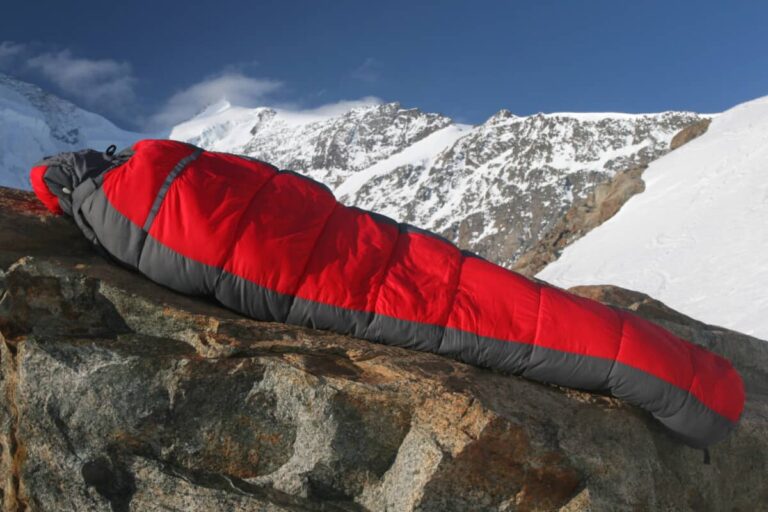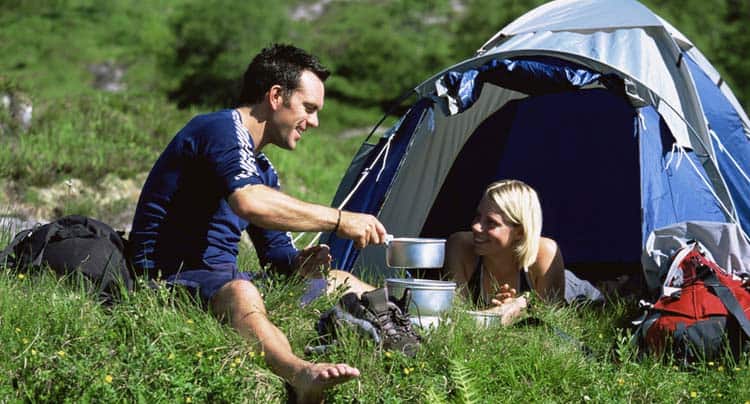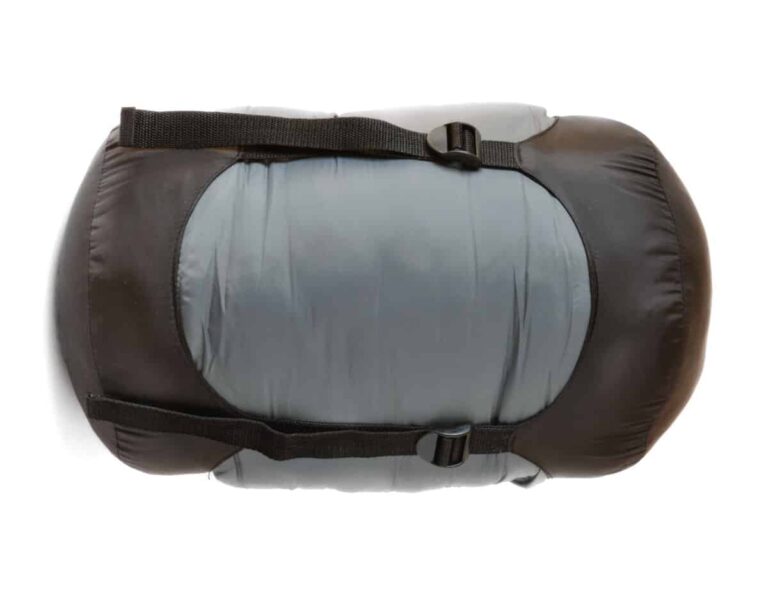How to Camp in Texas
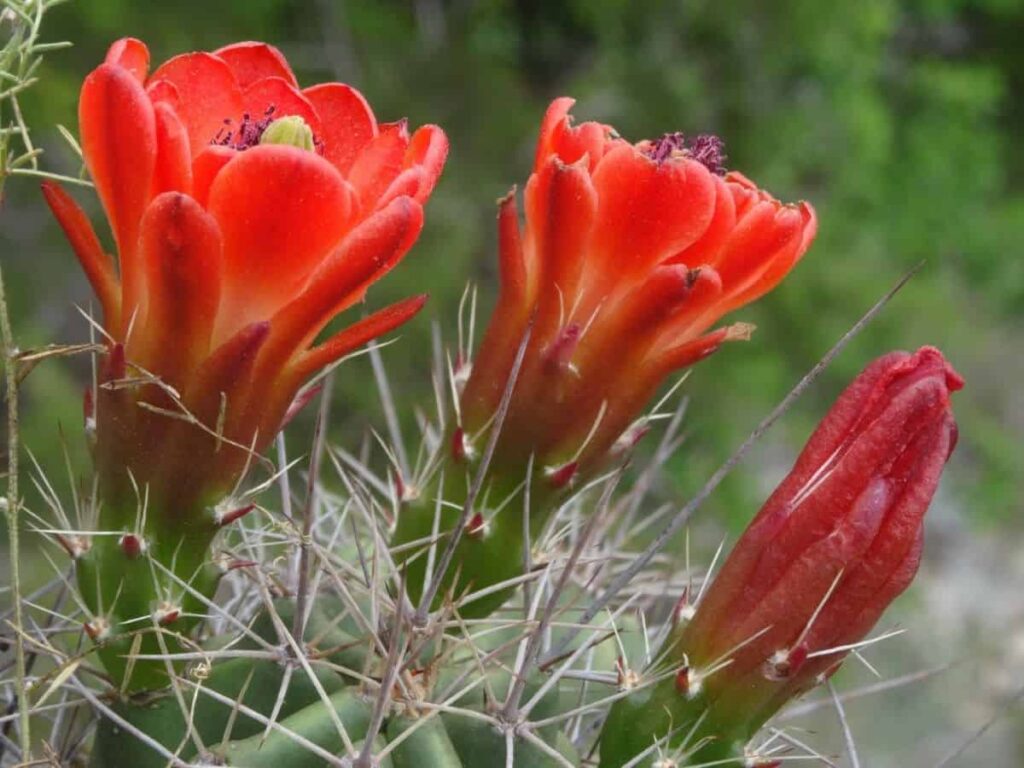
I’ve gone camping in several different parts of the world, and every place has their own idiosyncrasies. Now that I’ve lived here in Texas for several years, I’ve learned vital tips that help set expectations and will help you prepare and avoid common mistakes. I am passing these tips on so you can have the fun without the fuss.
So, what do you need to know before you go camping in Texas?
- Texas sometimes doesn’t cool down at night
- Texas has the 2nd highest amount of species of poisonous reptiles in the U.S. and also has countless thorny plants
- Almost all land is private, with a very small BLM portion, so you can only camp within designated areas
- How to navigate the Texas State Parks rules
- Be aware of seasonal crowds and park saturation
- How the definition of “primitive campsites” differs from other locations
I admit, when I first moved to Texas, I thought the camping was a bit strange because of its quirks and because of some extra rules. I’ve learned by now that Texas is a beauty that can only be described by the word “Texas”, and there is a lot of fun to be had. Here are some invaluable tips to make it less confusing and help you to skip some of the learning curve I had to go through:
How to Camp in the Texas Heat
According to usclimatedata.com, Texas highs are in the 90s and 100s Fahrenheit range on average during the Summer. Because much of Texas is considered a “humid subtropical climate”, that means that it can feel very hot due to some extra humidity that arid portions of the United States don’t experience.
TL;DR: It gets hot in Texas.
Here are some tips to keep you and your family both safe and comfortable.
Water
I remember in other places where I’ve hiked that I wouldn’t always bring my water bottle. Never make this mistake! It’s always a good idea to bring water with you camping, but in Texas, it’s a must. Bring plenty of water wherever you go, even if you’re just going on a day hike. Thankfully, many of the campgrounds have potable (drinkable) water available to campers.
Find the Shaded Campsite
At first, this doesn’t sound like a pro tip, because it seems obvious. However, not every campsite has shade, and when you are camping in the Summer months, a shaded campsite makes all the difference in the world whether you are going to be hot and miserable. If you can, scout out the campsites before you reserve one. If you don’t have the opportunity, often the rangers at the park will know which sites are shaded. Call ahead and ask to make sure you get a campsite you’ll enjoy hanging out at.
Swim
There are dozens of amazing parks, but the ones with water are the most fun in the Summer. We particularly have enjoyed Colorado Bend State Park, Inks Lake, and our beloved Guadalupe River State Park. These parks are right next to beautiful rivers where you can swim and fish, and it’s an excellent way to cool down.

Hike Early
Sometimes it’s been so hot I’ve slept on top of my sleeping bag with no tent fly. The evenings don’t necessarily cool down as it happens in other areas. The only fairly reasonable time to go hiking on super hot times of the year is to wake up early and go before the sun rises too high.
How to Have Fun Without Getting Bitten or Poked
The climate for southwestern Texas is humid subtropical. Just imagine a desert with monsoons and that about covers it. The harsh environment means the animals and plants that live here are “Texas Tough.”

Which means: poisonous snakes and thorny plants
Does this mean that it’s not safe to camp in Texas? Not at all. It just means that the signs posted to stay on the trails and to wear protective clothing are there for a reason. The campgrounds and the trails are generally well kept and you don’t have to worry beyond general alertness.
Hiking Safe
On your day hikes, always stay on the trail. Exploring wilderness requires gear such as snake boots and of course, long pants. In Texas State Parks, there aren’t a ton of places where they allow visitors to explore wilderness, anyway.
Enchanted Rock, an awesome park near Fredericksburg, is amazing, and I highly recommend it, but again you need to exercise caution especially in low light conditions, because those harmless looking bushes may actually be gigantic sprawling cactii.

One quick anecdote: We were at Enchanted Rock and we decided to climb down on a side that had no path as a shortcut. The area was full of fallen leaves, and we were tramping through it. It was then one of my friends that saw a coral snake (a small mouthed, but very poisonous snake). We scurried out of there, but it was a small reminder to myself to be more careful.
Grass Isn’t for Laying on
This isn’t because Texans are sticklers about keeping the grass nice, but rather because of Fire Ants. These dudes are everywhere, and it’s not very appealing to lay down on any grass, even in campgrounds.
Critters at Night
Texas has a lot of critters. This is true for camping globally, but in Texas, it’s critical to make sure you make your food inaccessible to these critters. Always put your food in your car when you sleep.
Bring Earplugs
Texas has raccoons, possums, wild hogs, armadillos, and sometimes even wild turkey.
Armadillos in particular I have noticed around campgrounds at night–and I’m surprised these critters have survived through the ages because they are so loud. They continuously will ruffle through the leaves searching for food, but it sounds more like a boy scout troop rolling around then it does a medium dog-sized critter.
These animals won’t provoke you if you leave them alone. If you have properly stored your food, you don’t have to worry.
If the sound of animals scurrying around your tent is at all disconcerting, I highly recommend ear plugs.
Summary
Keep your eyes open, stay within areas groomed for humans unless you are prepared with the proper clothing.
Where Can I Camp? Any Public Land?
BLM Land and Texas
In many states, particularly in the West, there is land managed by the Bureau of Land Management (BLM). Although there are rules for camping and hiking on BLM land, the regulations are much less strict. You can park on the side of the road, hike a few minutes and plop down in a sleeping bag where you are and fall asleep.
Although there is BLM land in Texas, it is very small. The vast majority of the land is privately owned, and plopping down on someone’s property off the side of the road could lead to fines and more dangerous action. Google “Texas Stand Your Ground laws” for more info about that.
Privately Owned Land
Scattered around Texas are privately owned parks. The city of Utopia, Texas, for example, owns a pond and some campsites within their city limits. Residents get to camp for free, while visitors have to pay around $20 as an entrance fee. Similarly, Paradise Canyon is a well kept (and on the expensive side) campground on the Medina River. You may have to do some hunting for these, but they are wonderful places to camp.
Texas State Parks
Because of the small amount of public land in Texas, the best options for car camping are the Texas State Parks. Because these are State Parks, there are some rules that you have to be aware of before visiting each park. Here are a few examples:

- Texas State Parks enforce burn bans
- As a rule, artifacts and nature are not to be carried out with you
- Campsite rules vary from park to park–some allow you to camp in a general area, while others enforce sleeping on a pad. (Sometimes a limestone or cement slab)
- Hammocking rules vary from park to park
- Many state parks do not allow gathering of firewood
Additionally, there is a difference between a “State Park” and a “Natural Area.” Natural Areas generally have much stricter rules and lower availability with less regular hours.
I know it sounds like there are a lot of rules. But, it helps to set expectations for every trip by looking up the Texas Parks & Wildlife Department (TPWD) website before you go to any park and glancing at the rules.
Is it worth getting a Texas State Parks Pass?
Absolutely YES
If you are planning on making 2-4 trips with just you and your spouse to a Texas State Park within a year, then it is not worth it. But, if you go any more than that with any more people, then it quickly becomes worth it to get a Texas State Parks Pass. The Texas State Parks Pass allows an entire carload to bypass entrance fees.
For popular parks, these day-use fees can be substantial. Here are a couple examples:
- Guadalupe River State Park: $7 for an adult
- Lost Maples Natural Area: $6 for an adult
- Garner State Park: $8 for an adult
At the time of writing, a Texas State Park Pass is $70 for the year.
We recently went to Government Canyon with my wife, as well as my brother and his wife and their two kids. What would have cost us $24 cost us nothing.
It makes a lot of sense if you are going to use the parks on a regular basis to buy a Parks Pass. As this is the main way to go camping in Texas, I highly recommend it.
The Texas Park Crowd Side Effect
A note about Texas–especially concerning parks within 2-3 hours of major cities, parks can be so popular that they will not allow more people in. This has happened to me a couple times–I didn’t call ahead and went to a popular park on a Saturday. We drove a couple hours to Garner State Park, and by the time we got there, the rangers were not letting anyone in because the park was at capacity.
I was floored… a park? Being full?
What I learned is that calling ahead on the perfect day to go camping or hiking is a brilliant idea. Making camping reservations ahead of time is extremely recommended for Texas State Parks since often during the popular months the campsites are booked a couple weeks in advance. You can’t plan on being able to go to any park and find a campsite. Make sure you reserve ahead of time.
The parks that are subject to “filling” are parks with water during the Summer months. These are extremely popular destinations for people during the hot summer months (although they are generally available for the rest of the year). When you go to the water feature in the park on days like these you will see why. It reminds you of a beach in California on a warm day.
Pro-tip: If you want to go to a park on a busy day (such as Memorial Day, or the Fourth of July), get there as soon as the park opens. Most people on days like these will roll in around 9:30-10:00 AM.
Wilderness Camping in Texas
This was an interesting lesson for me. When I was camping as a youth in the Uinta mountains in Utah, there was a notion of a “Primitive Area”. After the primitive area boundary, the paths became less defined, and helpful improvements such as bridges became more… primitive. There were no campsites per se, rather, any place was a campsite if you wanted it to be. The wilderness was at your fingertips!
There are only a couple of Texas State Parks that actually have “wilderness” camping. Big Bend Ranch State Park is one of these. With a couple restrictions, any place in the backcountry zone is available for you to camp in. See TPWD’s website for more details.
As I mention, however, this is the exception rather than the rule. The term “Primitive Campsite” in Texas doesn’t always mean solitude.
Texas and The Somewhat Primitive Campsite
To help you set expectations, a primitive campsite in Texas just means that you have to walk to your campsite. Walking may be a couple hundred yards. In fact this is very common for many state parks for your car to be in sight of your primitive campsite. Primitive Campsites sometimes (not always) have potable (drinkable) water spigots that are intended for multiple campsites.
Primitive Campsites will sometimes also have the restrictions of a specific pad to sleep on.
That being said, several parks, such as Enchanted Rock, have primitive campsites that require some hiking a couple miles to get to if you want more solitude.
Many parks offer primitive campsites, which are always cheaper, but how primitive and far they are from the car lot varies. Typically though, most of the available primitive campsites are either directly in sight of the car lot, or just out of sight.
Related Questions
Is car camping in Texas worth it? I listed several of the gotchas and things to be careful of while camping in Texas. I suppose it’s because I have run into situations where I wasn’t prepared and got frustrated as a result. I have to wholeheartedly say that car camping in Texas is amazing fun, and the beauty and Texas…ness of it all is inspiring. The Texas rivers are something you don’t want to miss! They are gorgeous. With the tips I’ve listed above, you are much better prepared and set to enjoy your time outdoors.
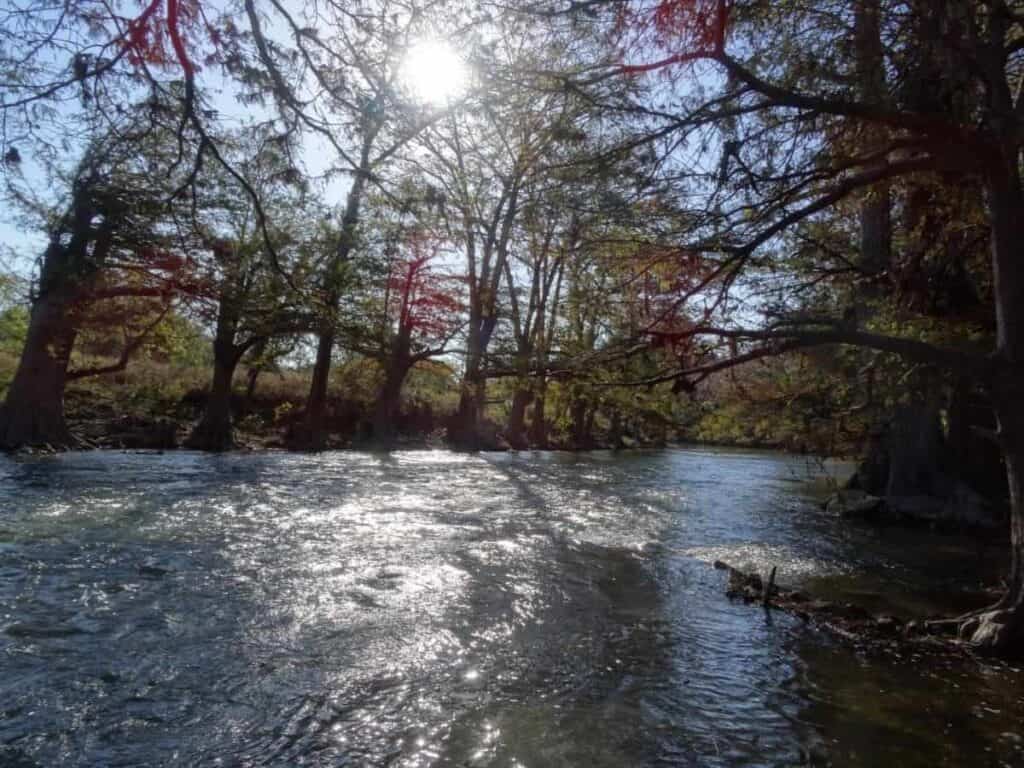
What else is there to do at parks other than camp? Great question. It varies from park to park. Almost always there are hiking trails, but sometimes there are historic ruins (such as Goliad State Park), sometimes there are waterfalls to explore, and sometimes even caves! Many of the parks have programs such as wilderness training, stargazing, animal and plant nature tours, and many more.

Are Texas State Parks kid friendly? Yes! Some are more kid-friendly than others, though. Some parks feature kid-centric discovery centers with fun facts to learn and sometimes rubber poop made to mimic local animals scat in the area. These also have nature programs made for kids that you can call ahead to ask about, including animal identification, nature hikes, etc.

